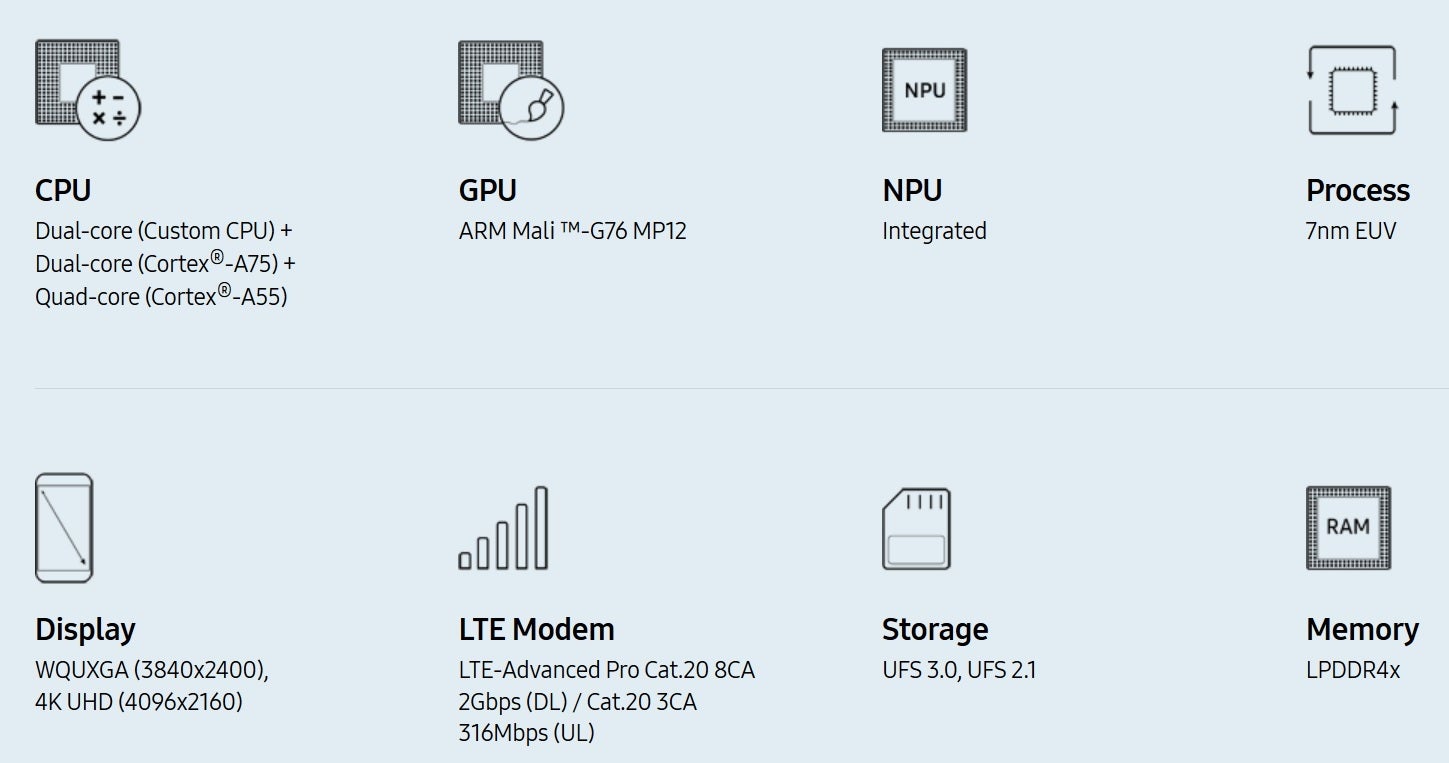Samsung unveils the chip that will power the Galaxy Note 10 series in most countries

Just hours before Samsung is set to unveil the Galaxy Note 10 line in the U.S., the manufacturer officially introduced the chipset that will power the phones outside of the U.S. The Exynos 9825 SoC is manufactured at Samsung's own fabrication facilities using the 7nm EUV process. Using this process, more transistors fit inside the new chip than the number employed in the 8nm Exynos 9820. This should lead to performance improvements of 20% to 30% while the Exynos 9825 consumes 30% to 50% less power. The EUV stands for extreme-ultraviolet lithography. This is a technology that uses ultraviolet beams to etch silicon in finer details allowing for more precise placement of circuitry inside the chip.
Samsung says that the Exynos 9825, similar to the Exynos 9820 it replaces, is equipped with two Samsung custom CPUs, two Cortex-A75 CPUs for complex tasks and four Cortex-A55 CPUs for less taxing demands. The graphics process unit (GPU) on the chip is the ARM Mali-G76 MP12 (also the same as the one on the Exynos 9820). The A-75 cores and the GPU will run at faster clock speeds than the same components on the Exynos 9820; the faster clock speeds and the use of 7nm EUV helped the newer chip to run faster in tests against its predecessor. The chip will have an integrated Neural Processing Unit (NPU) to help run Artifical Intelligence features for a smartphone camera allowing for the recognition of objects to optimize photographs. It also is used to learn user patterns and help apps pre-load faster. The NPU can also support Augmented Reality capabilities on a handset.
Samsung's Exynos 9825 chipset will be powering the Galaxy Note 10 series outside of the U.S.
The Exynos 9825 also comes with Universal Flash Storage (UFS) 3.0, which has twice the bandwidth and uses less energy than UFS 2.1. It also can run at higher temperatures, which is important considering all of the demands that are thrown at a smartphone these days. UFS 3.0 has a sequential read speed of almost 2280 MB/sec compared to roughly 800MB/sec with UFS 2.1. As for the modem on the Exynos 9825, it is an integrated 4G LTE-Advanced Pro modem with 8x Carrier Aggregation. The latter combines carriers to form larger data channels in order to increase capacity on a network. It is one of the tools used by wireless providers to increase data speeds. And when paired with Samsung's Exynos 5100 5G modem (which supports both mmW and sub-6GHz 5G airwaves), the Exynos 9825 will support the next generation in wireless connectivity.

The Samsung Exynos 9825 chipset is now official
The Exynos 9825 supports LPDDR4X memory and 22MP cameras in back and front. It also will work with a dual-camera setup (16MP + 16MP). Video can be shot in 8k at 30fps and 4K UHD video shoots at 150fps. Using a technology known as physically unclonable function (PUF), the chip isolates and secures users' personal data.
Historically, Samsung usually employs the latest Snapdragon Mobile Platform to run the latest Galaxy Note model in the U.S. with the Exynos chipset used just about everywhere else. However, a recent rumor called for all Galaxy Note 10 units (as opposed to the Galaxy Note 10+) in the states to also feature the Exynos 9825 SoC except for Verizon branded models. That rumor turned out not to be true, and all Galaxy Note 10 variants in the U.S. should be equipped with the Snapdragon 855 (+) Mobile Platform. The latter is manufactured by TSMC using its 7nm process.
The last time that a Samsung Galaxy Note phone was sold in the U.S. with an Exynos chip was back in 2015 with the Galaxy Note 5. This was the year that the Snapdragon 810 had problems with overheating and the Galaxy S6 and the Galaxy Note 5 were both powered with the Exynos 7420 SoC in the states.










Things that are NOT allowed: